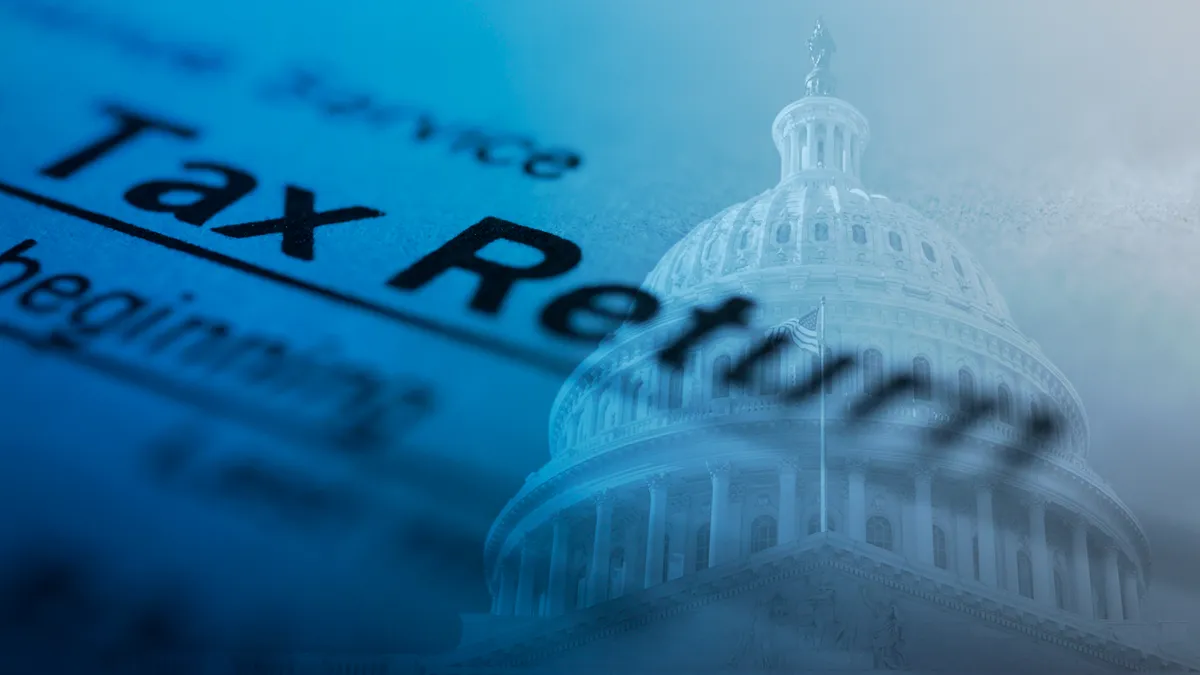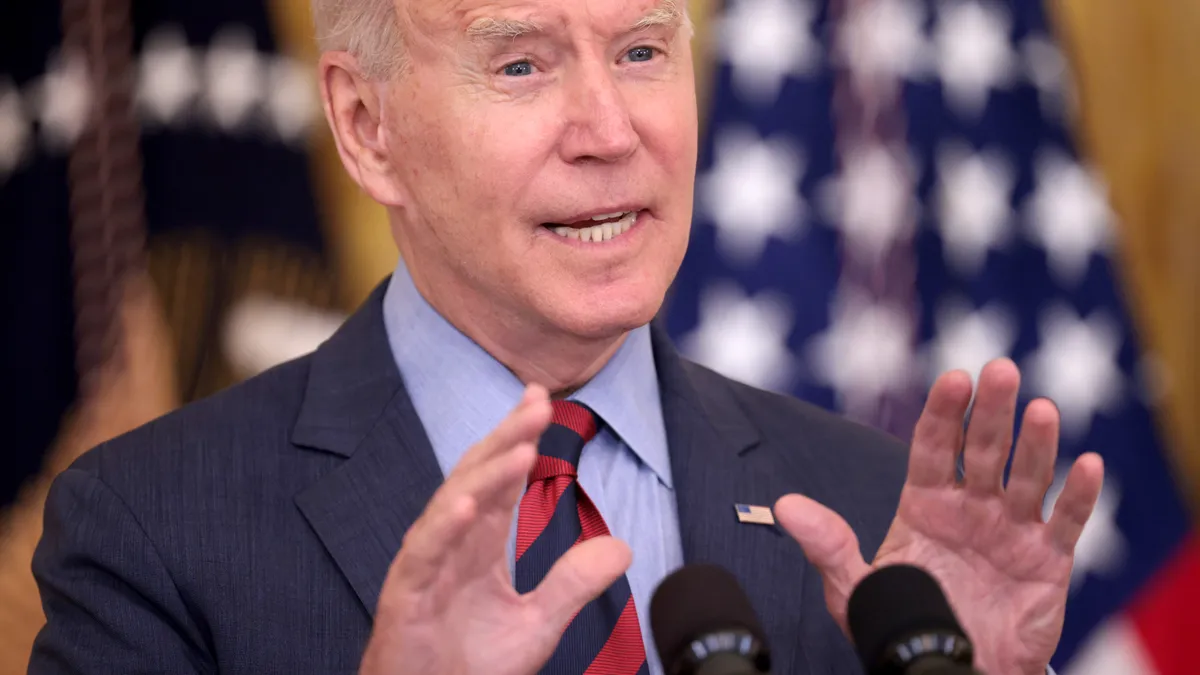Companies should brace for change.
The 30-plus-year drought since the last tax code overhaul may finally be over as Congress sets out to vote on and place a now-finalized tax bill on President Donald Trump's desk.
The bill slashes the corporate tax rate from 35% to 21%, and also includes massive changes to how income earned or kept offshore is treated.
In other words, this week could be monumental for business accounts nationwide. Every industry could see effects — including the waste industry. Here's a 60-second overview of what the bill could change, and where industry associations stand on it:
IMPACT: Reduction in corporate and pass-through rates seen as a positive by companies of all sizes throughout the industry.
POSITION: The waste industry has been generally supportive throughout. This included lobbying by the National Waste & Recycling Association and Institute of Scrap Recycling Industries.
ANALYSIS: Industry executives have been eagerly anticipating tax reform in earnings calls, interviews and casual conversation all year. Multiple CEOs have projected major M&A activity will follow if any kind of corporate rate reduction is finalized, further accelerating the rapid pace of consolidation in the industry. For businesses not organized as corporations, particularly smaller family-run service providers or local recyclers, the pass-through rate reduction will be similarly welcomed.
Another key provision is the ability to fully expense all heavy equipment purchased until January 2023. With many material recovery facility owners considering upgrades to meet China's more demanding contamination standards this may be even more relevant heading into 2018.
Others areas of concern for the waste and recycling sector had included a change in deductions for research and development and the elimination of tax-exempt private activity bonds. The latter was seen as especially relevant for local governments that may rely on such bonds to fund new solid waste and recycling infrastructure. Many consider the state of U.S. waste infrastructure to be behind the curve and are hoping for more domestic expansion in light of China's evolving trade restrictions. In the bill's final version, companies will now have to write off research expenses over a longer period of time and the bonds have been preserved.
Cole Rosengren / Waste Dive
THE BIGGER PICTURE
The tax reform does not just affect waste and recycling. Here's how the bill may alter other industries.
SUPPLY CHAIN
IMPACT: A cut in the corporate tax rate could increase cash flow, allowing more investment in technology, business expansion and new jobs along the supply chain.
POSITION: Manufacturers and freight industries are for the bill, but ports and airlines have some reservations.
ANALYSIS: For business, the tax reform bill appears to deliver. Increased cash flow from a lower tax rate could prompt the different modes of freight and 3PLs to invest more in supply chain visibility tools, predictive analytics and blockchain alliances.
But if signed into law, the bill would also tax companies for making payments to foreign companies, which could hurt the global supply chain.
In that respect, the bill is a bit of a mixed bag. While the bill may spur expansion and job growth for big and small American businesses, the bill’s “America First” slant could pose serious difficulties for supply chain managers dealing with foreign suppliers, 3PLs or carriers.
The bill will disrupt supply chains, affecting the flow of supplies and products and potentially making it more expensive for American companies to do business and trade with foreigners. While it’s too soon to know whether the lower tax rate will compensate for that provision, supply chains are in for a shakeup in 2018.
Kate Patrick / Supply Chain Dive
CONSTRUCTION
IMPACT: The public construction sector will benefit from the uninterrupted flow of private-activity bond financing, and both the contractors who are structured as pass-through entities and C Corporations will see significant tax relief.
POSITION: The retention of tax-free status for PABs, as well as favorable treatment of energy-related exploration and tax credits have some segments of the industry breathing a sigh of relief, but potential PAB use limits and the locking out of design professionals from being able to take advantage of the new, lower pass-through tax rate could result in some pushback.
ANALYSIS: The House GOP tax bill, passed early in November, took aim at PABs – a financing scheme that allows private entities developing public projects to borrow at the same tax-free rate as government agencies do – and eliminated them altogether. The Senate's version restored PABs, possibly driven by the expectation that they will play a big role in financing the president's $1 trillion infrastructure plan, but both chambers call for a termination of another popular finding vehicle, tax-exempt stadium bonds. Some states and municipalities rely on tax-free bonds for their contributions to the new construction and renovation of sports venues – often a condition of being able to snag a professional team – but, according to the Brookings Institution, the federal government loses out to the tunes of billions when projects that are financed this way.
The latest version of the reconciled bill also sets a new 21% tax rate for corporations, a break for everyone except those low-earners that currently pay 15%. But many construction companies are pass-through entities, a structure that allows owners to include business profits on their personal tax returns. The new tax reform measure gives those individuals a 20% break on that income, a bigger break that the House bill's rate of 25%. However, some in the industry were frustrated by a provision that professional service and consulting firms like architects and engineers to take that deduction.
The energy sector got better news when it was revealed that the Senate bill would reinstate the wind sector's production tax credit that the House bill eliminated. While the industry awaits the final version of the joint bill, word is that that credit, as well as one for the purchase of electric vehicles, will stay put. The measure also green-lights exploration in Alaska's Arctic National Wildlife Refuge.
Kim Slowey / Construction Dive
ELECTRIC UTILITIES
IMPACT: Lower corporate tax rates and new depreciation rules should free up capital for utilities to invest in infrastructure or refund to customers.
POSITION: Electric utility trade groups support the pending tax reform.
ANALYSIS: Tax reform is expected to benefit electric utilities in three separate ways, said Travis Kavulla, vice chairman of the Montana Public Service Commission.
A lower tax rate will “create headroom” in existing utility rate structures. Utilities currently set rates for customers factoring in a 35% corporate rate. Cutting that could create a “rare opportunity,” Kavulla said, “where rates could remain the same even while plowing more capital into infrastructure.”
The pending legislation would also allow companies to deduct 100% of the cost of a capital project from their taxes in the first year, rather than deducting smaller amounts over time. That would create a “front-loaded incentive,” Kavulla said, “to plow money into infrastructure early.”
Today, utility rates are set on the assumption that companies will pay a 35% tax rate, but various deductions allow utilities to pay less upfront, allowing utilities to realize “early-year cash benefits even if it means liability in later years.”
Under current law, those future liabilities would be based on a 35% corporate tax rate, but lowering that rate would mean utilities would have to pay less than they planned.
“Basically, Uncle Sam and customers have been fronting [utilities] extra cash for infrastructure in the early years,” Kavulla said. “That bill eventually becomes due, but because you’re changing the tax bill midstream what’s due to customers [in refunds or infrastructure spending] has actually increased.”
Critics of tax reform argue corporations are likely to return funds from tax reform to shareholders. While that “may be the case in the wider economy,” Kavulla said, “regulators, if they’re paying any attention at all, are not going to allow that.
“If commissions are not on top of that it could result in limited situations utilities just pocketing that money so regulators and consumer advocates are going to have to be pretty proactive,” he said.
Gavin Bade / Utility Dive
RENEWABLE ENERGY AND NUCLEAR POWER
IMPACT: Provisions of GOP tax legislation most damaging to renewable energy were left out of the final conference report, but tax credits critical to the nuclear sector were also excluded.
POSITION: Renewable energy interests are expected to continue opposing the GOP tax bill. They and nuclear companies will look to a potential tax extenders bill next year to grant credits to a variety of technologies.
ANALYSIS: Renewable energy interests were relieved that proposed cuts to electric vehicle and wind subsidies did not make it into the final tax legislation last week. But they expressed concern about the retention of a Base Erosion Anti-Abuse Tax (BEAT) provision that companies could prevent them from monetizing tax credits.
The Senate BEAT provision threatened to derail up to $12 billion in tax equity investments, but the final bill aims to avoid that by allowing companies to offset up to 80% of BEAT tax payments accrued due to energy tax credits.
The renewable energy industry supports the changes, but still harbors some concerns about the impact of BEAT.
"[W]e are uncertain how the marketplace will react to the fact that more multinational firms may now be covered by the BEAT, and tax credits may not all be useable in any given year," said Gregory Wetstone, president and CEO of the American Council on Renewable Energy (ACORE).
Under the current text, 80% offset provision for BEAT expires in 2025. That could stifle investment in wind generation, Wetstone added, as they receive tax credits for producing power for a decade after they are put into service.
Credits of nuclear generation and other “orphan” tax credits could be folded into a tax extenders package that Sen. Lisa Murkowski (R-AK) expects to follow the larger reform bill.
Gavin Bade / Utility Dive
HUMAN RESOURCES
IMPACT: Tax reform is expected to impact several areas of interest to HR: paid leave, fringe benefits, automation and offshoring.
POSITION: The tax proposal could, on balance, be good for companies and in turn good for HR professionals. The industry has not taken a specific stance on the issue to date.
ANALYSIS: Tax reform is expected to impact several areas of interest to HR including some core issues such as paid leave, fringe benefits, automation and offshoring.
One proposal would give employers a tax credit equal to 25% of an employee's salary if it paid them during FMLA leave. There are several proposals to scrap deductions for benefits employers often are involved in, like transportation and relocation expenses.
Some thought the bill might create new tax incentives to encourage employers to create jobs. (That's what the Trump administration promised, after all.) Instead, it proposes to allow employers to write off the full value of machines right away, perhaps encouraging automation without an accompanying incentive for hiring humans.
The bill proposes to exempt some income from U.S. companies with operations outside the country. This encourages business to send work overseas, some experts have said.
HR will probably like the paid leave proposal, as it gets at an existing problem without a mandate. Instead, it's an incentive to do something many are already doing anyway. On the flip side, the fringe benefit exclusions do the opposite, creating a disincentive for employers to offer those benefits.
The automation and offshoring items are, on their face, good news for companies. Some, however, say they're not as useful without an incentive to hire people, too. After all, machines can't be upskilled when needs shift.
Kate Tornone / HR Dive


















